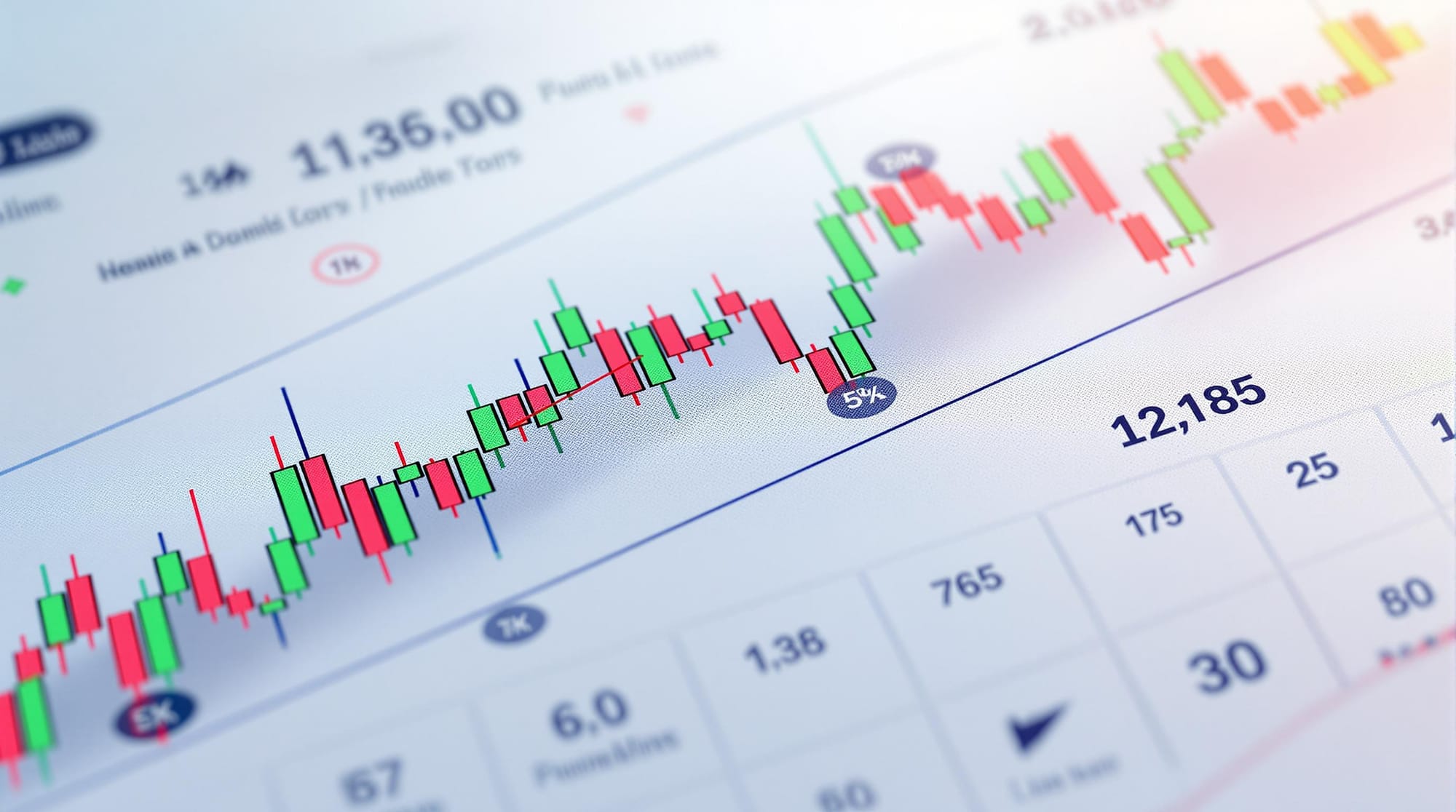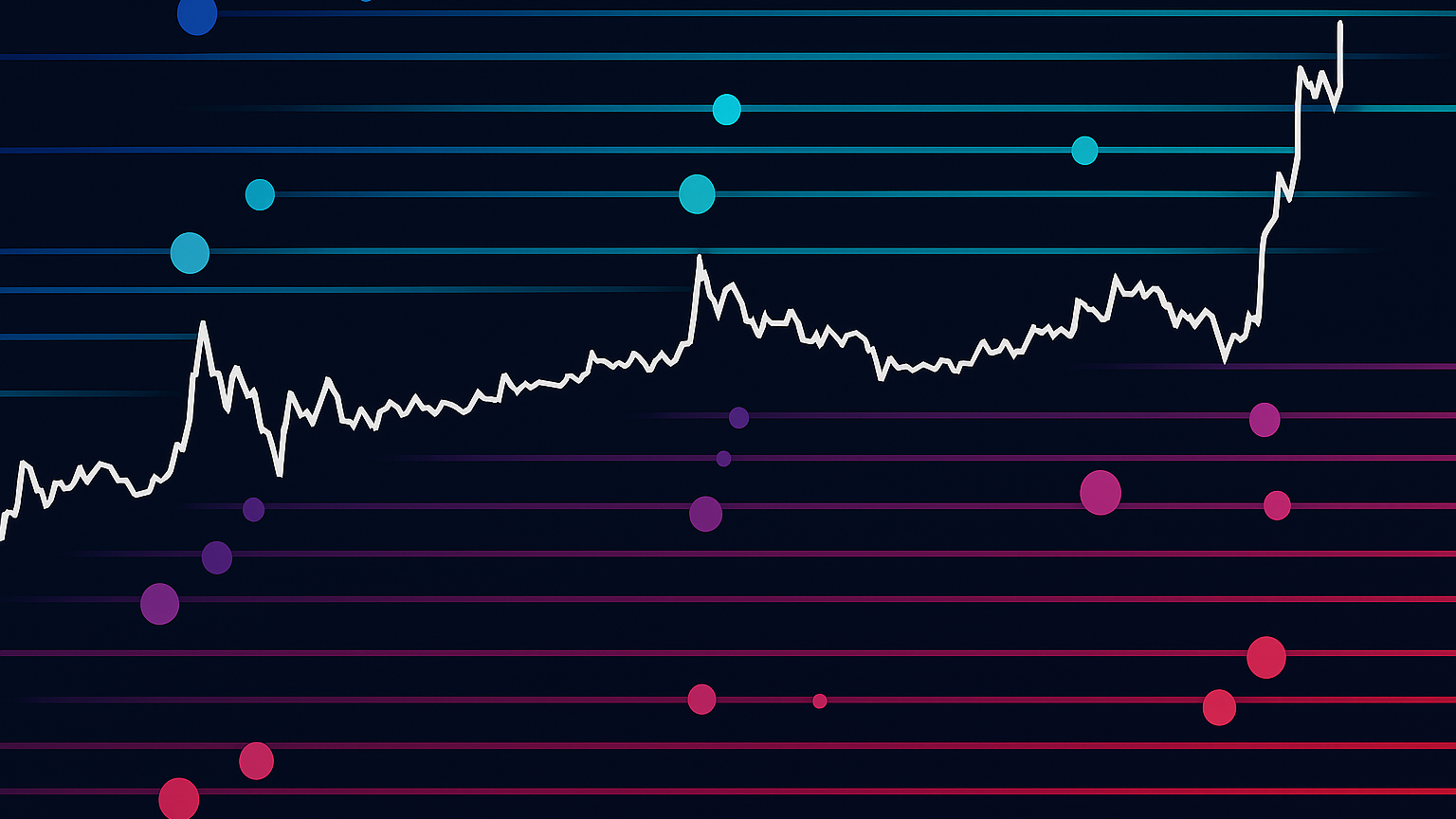Learn how to leverage traditional chart patterns for effective trading strategies, risk management, and improved decision-making.
Chart patterns are a key element in technical analysis, helping traders predict market movements by analyzing price charts. This guide covers:
- Reversal Patterns: Such as head and shoulders, signaling trend changes.
- Continuation Patterns: Such as flags or triangles, indicating trend pauses.
- Trading Strategies: Entry/exit points, volume analysis, and time frame selection.
- Risk Management: Stop loss placement and position sizing.
- Advanced Techniques: Combining multiple time frames, integrating patterns with indicators, and leveraging AI for pattern recognition.
Whether you're new or experienced, this guide explains how to use chart patterns effectively for better trading decisions.
Chart Pattern Basics
Understanding Price Movements
Chart patterns emerge from the interplay of supply and demand, influenced by factors like support and resistance levels, trend directions, and volume activity across different time frames.
Key Elements of Price Movements:
- Support and resistance levels: These reflect price points where market psychology often causes reversals or pauses.
- Trend lines: Indicate the overall market direction.
- Volume activity: Helps confirm the strength or weakness of a pattern.
- Time frame context: Patterns can vary depending on the time scale being analyzed.
The Role of Market Psychology
Chart patterns are deeply rooted in trader behavior and emotions. These patterns recur across markets and time periods because human emotions like fear and greed drive predictable reactions.
Take the head and shoulders pattern as an example. It begins with rising optimism (the left shoulder), peaks with heightened bullishness (the head), and then declines as confidence wanes (the right shoulder). Volume analysis plays a vital role in validating such patterns, offering clues about their reliability.
This connection between trader psychology and volume analysis lays the groundwork for actionable strategies, which will be discussed in later sections.
Ultimate Chart Patterns Trading Course
Main Chart Pattern Types
Chart patterns are divided into two main categories, each providing traders with insights into possible market movements. Here's a closer look at both.
Trend Reversal Patterns
These patterns reflect shifts in trader sentiment, often signaling a change in market direction. For instance, the head and shoulders pattern, as illustrated by the Tesla example, is one of the most dependable reversal indicators—especially when confirmed by volume.
-
Triple Bottom: Occurs when prices test a support level three times before breaking through resistance.
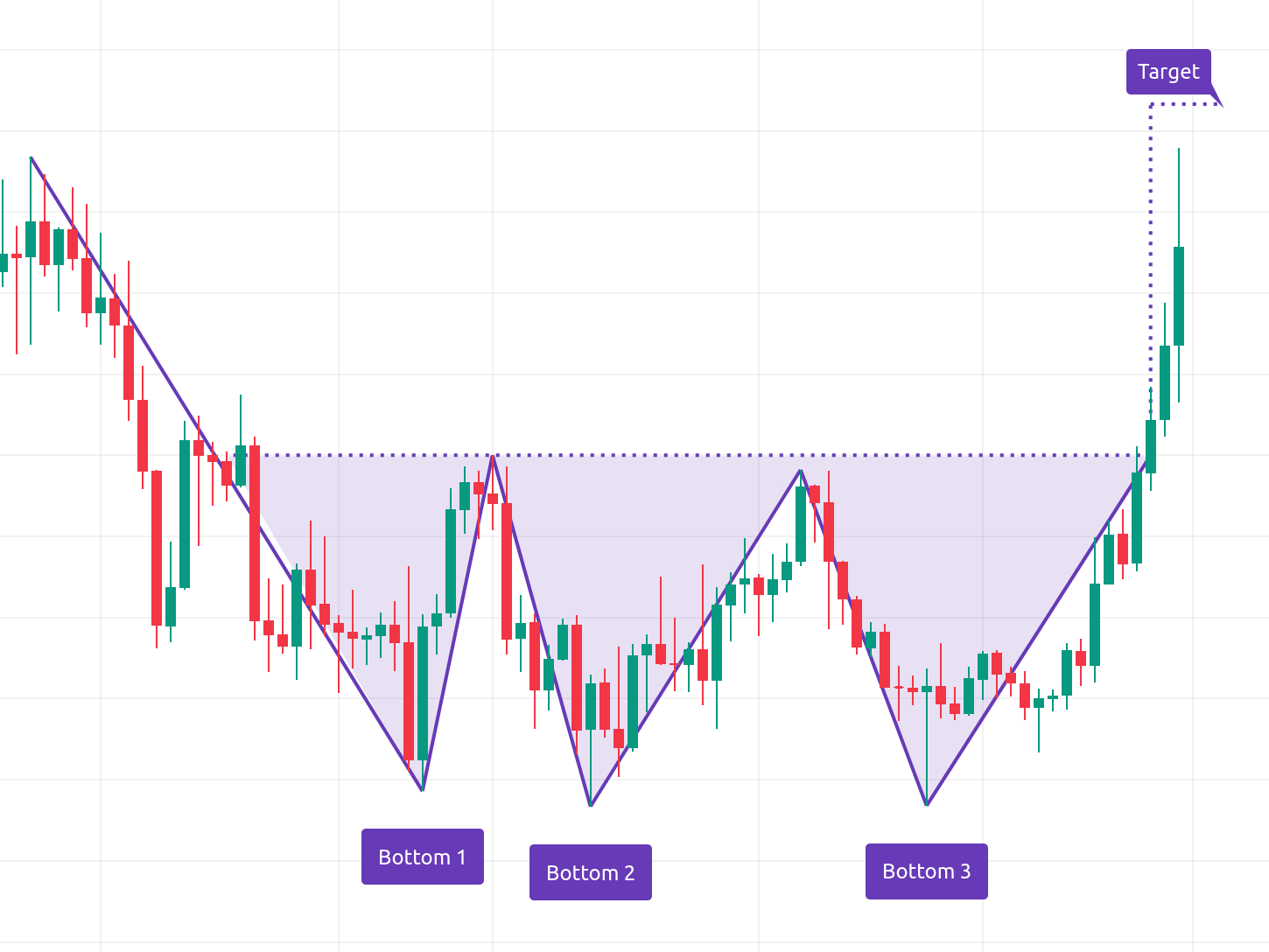
-
Double Top: Indicates weakening bullish momentum when buyers fail to surpass previous highs.
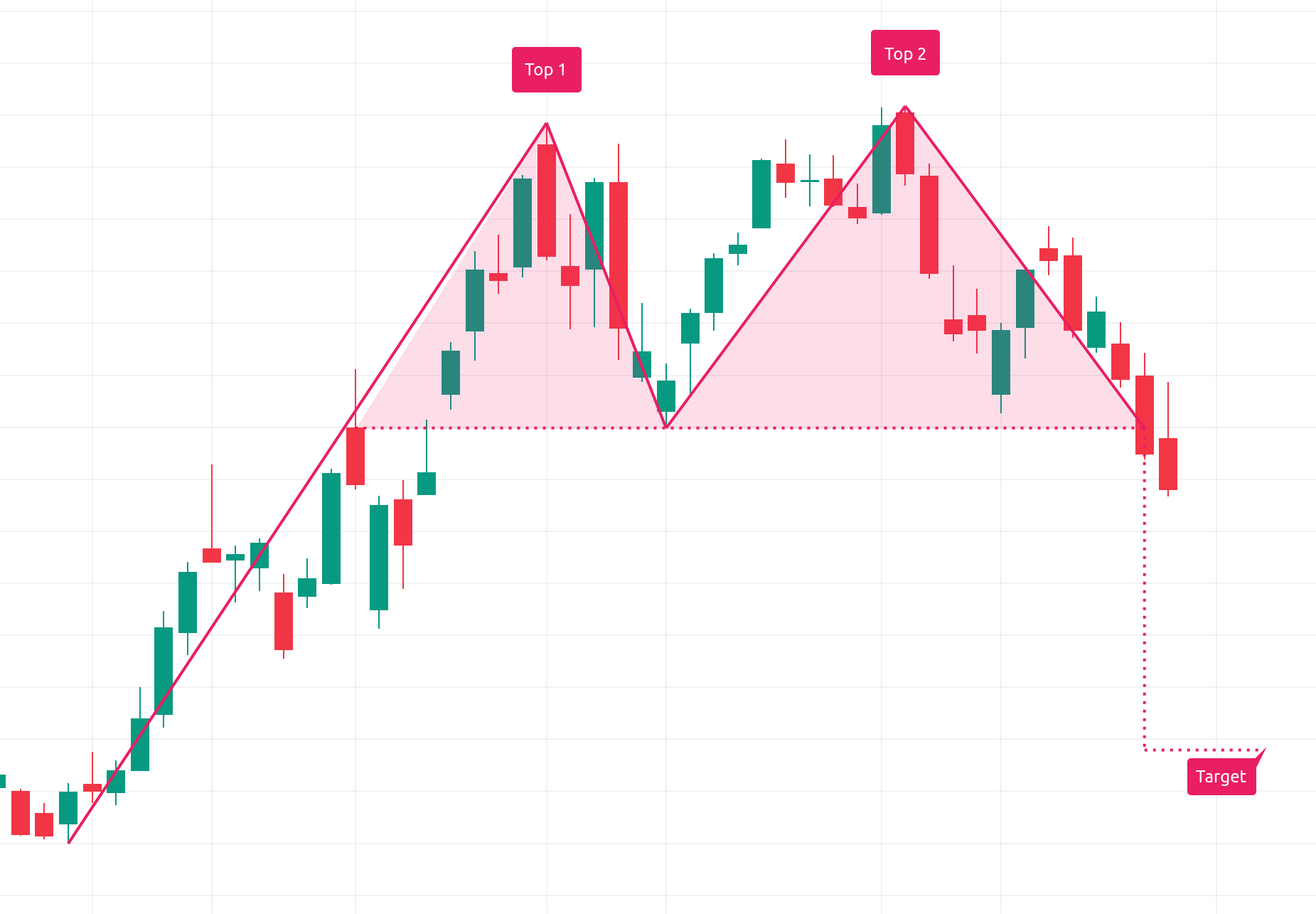
Trend Continuation Patterns
Unlike reversal patterns, continuation patterns suggest a pause in the current trend rather than a reversal.
-
Symmetrical Triangle: Formed by converging trendlines and reduced trading volume.
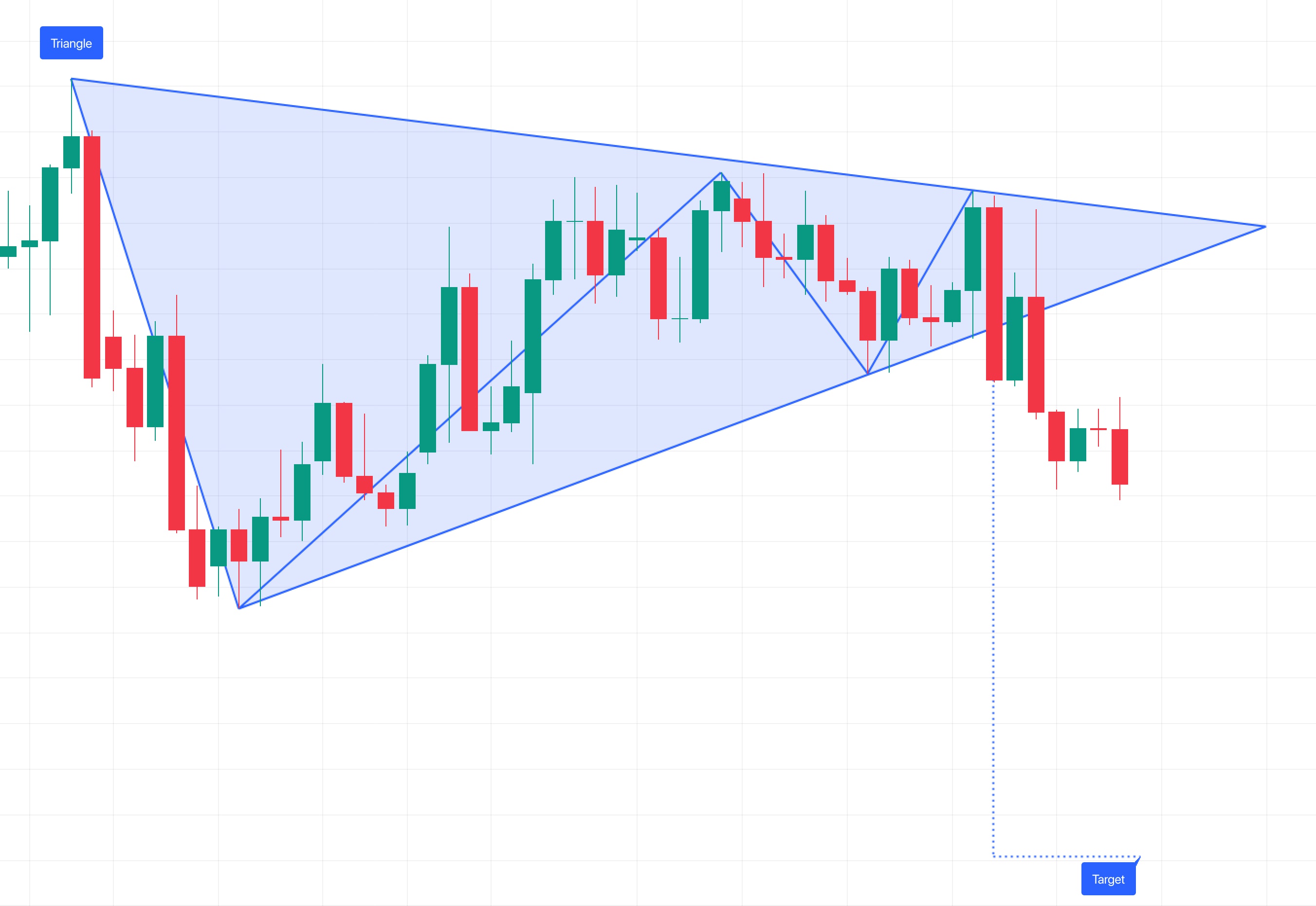
-
Flags and Pennants (Bull Flags): These appear as brief consolidations following a sharp price move, with breakouts typically validated by a surge in volume.
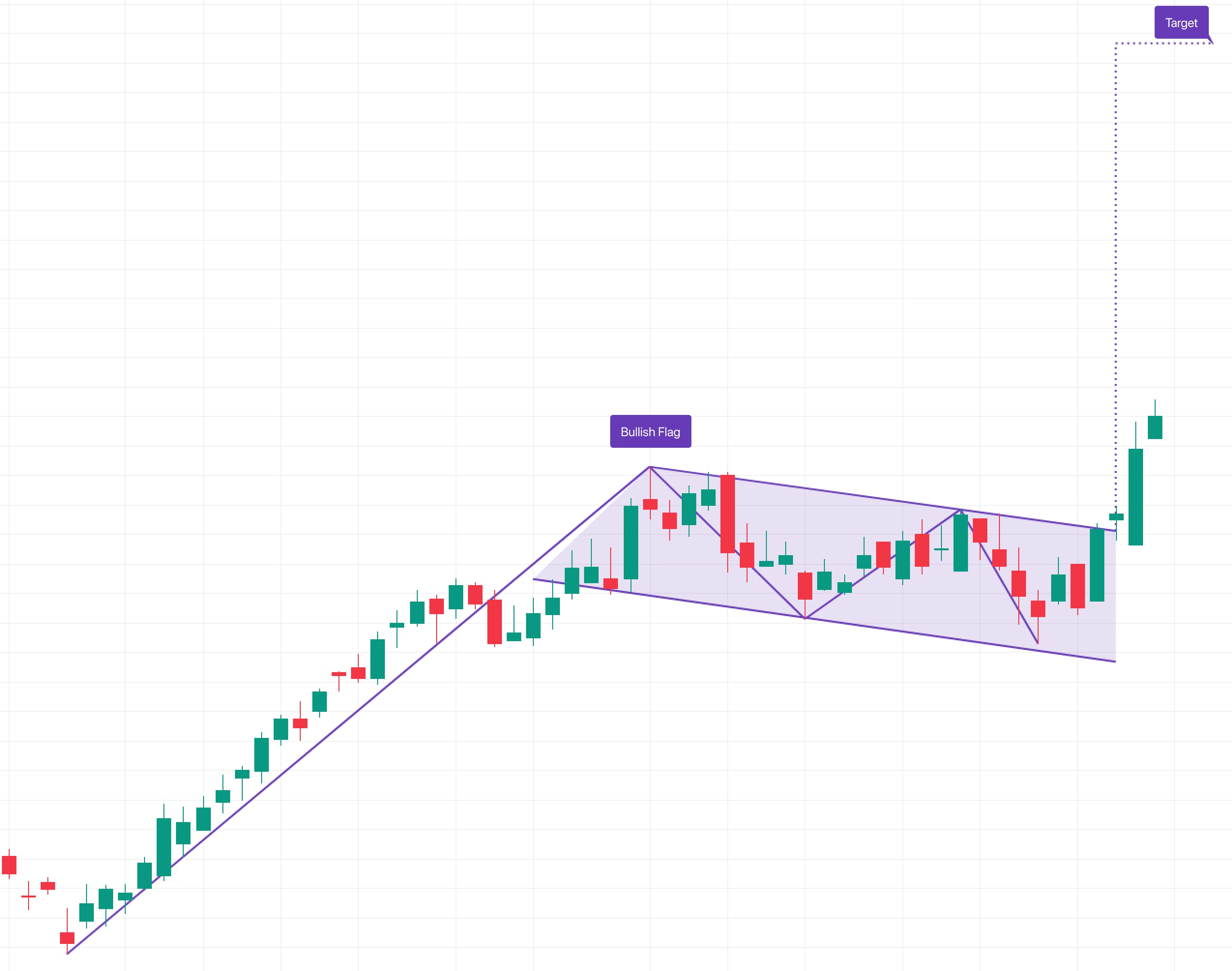
Double Bottom
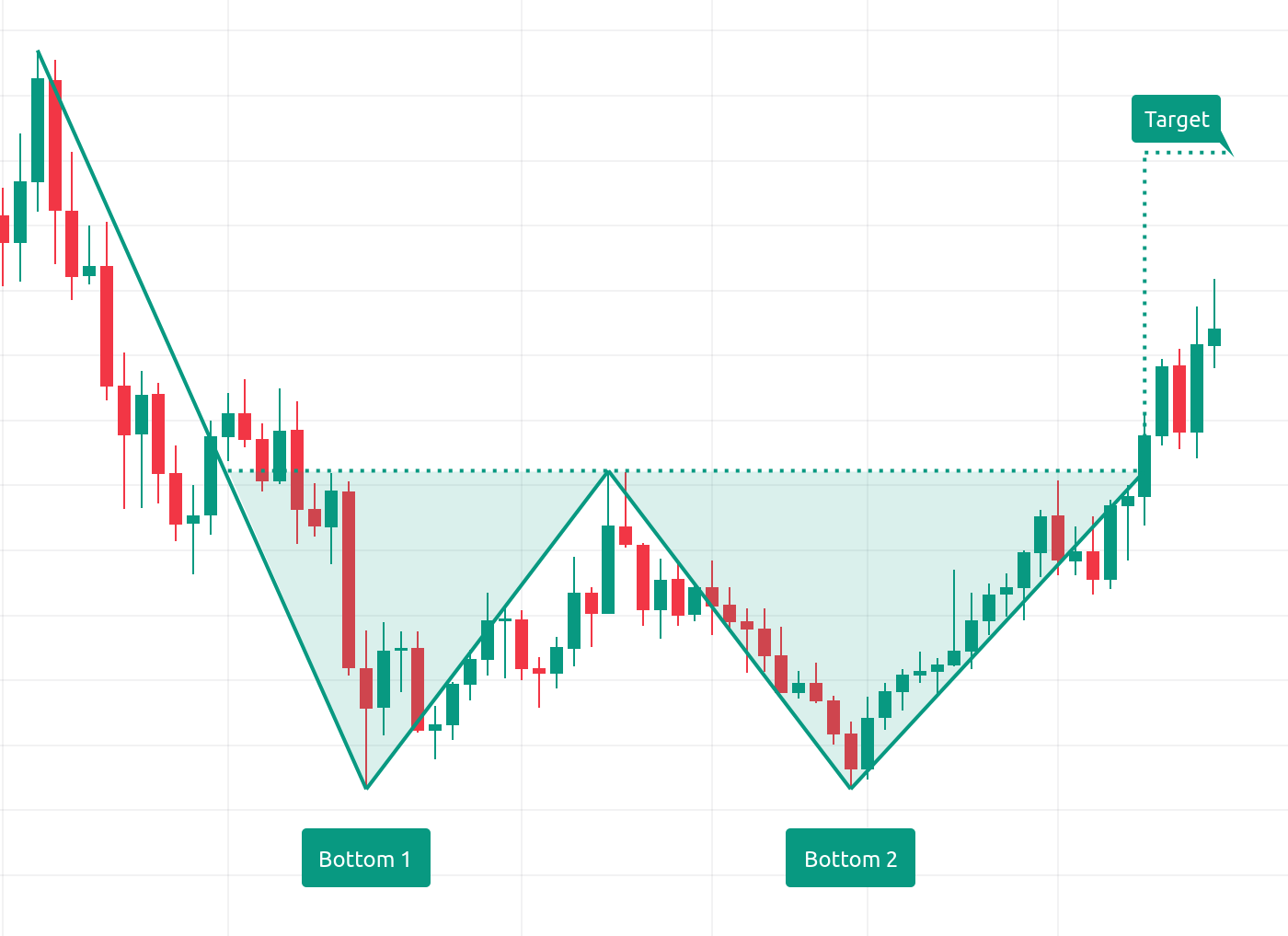
This pattern signals potential bullish reversals when prices form two distinct lows at a support level.
Trading with Chart Patterns
Once key chart patterns are identified, the next step is to translate those insights into actionable trades.
Entry and Exit Points
The best entry points often occur when a pattern breakout is confirmed by a spike in trading volume. For continuation patterns like flags, the "measured move" technique helps set exit targets. For example, if a symmetrical triangle measures 100 points and breaks upward at 500, a target exit might be set at 600 [2].
Volume Analysis
Volume plays a critical role in confirming chart patterns. Here’s an overview of how volume typically behaves during various stages of a pattern:
| Pattern Stage | Volume Behavior | Interpretation |
|---|---|---|
| Formation | Decreasing volume | Indicates consolidation |
| Breakout | Sharp increase in volume | Confirms the breakout |
| Post-breakout | Sustained higher volume | Suggests the trend will continue |
A practical example is Bitcoin's ascending triangle in January 2024. When Bitcoin surged above $45,000, the daily trading volume increased by 150%, confirming the bullish breakout [9].
Time Frame Selection
Choosing the right time frame depends on your trading style. Day traders may use 5-minute to 1-hour charts, while swing traders tend to rely on daily or weekly charts. Higher time frames help filter out short-term noise, offering more reliable insights.
Some tips for selecting the right time frame include:
- Aligning with your trading style (e.g., day trading or swing trading).
- Considering the asset's volatility.
- Ensuring the time frame matches the pattern's duration.
- Accounting for market hours that might impact the asset.
A common strategy is to start with a higher time frame to determine the overall trend, then move to a lower time frame for precise entry points. For example, when trading the S&P 500, one might use the daily chart to spot major patterns and switch to a 4-hour chart to fine-tune the entry [10].
Risk Control Methods
These methods are designed to protect your gains when trading based on chart patterns, building on the entry and exit strategies discussed earlier.
Stop Loss Placement
Setting stop losses is a critical part of managing risk when trading chart patterns. Instead of using arbitrary price levels, stops should be based on the structure of the pattern. For volatile markets such as cryptocurrencies, indicators like the Average True Range (ATR) can be useful. A common approach is to set stops 1-3 times the ATR value from the entry point [6].
Below is a quick reference for stop loss placements with popular chart patterns:
| Pattern Type | Stop Loss Placement | Rationale |
|---|---|---|
| Head & Shoulders | Above the right shoulder | Invalidates the pattern |
| Double Bottom | Below the lowest point | Signals a support break |
| Ascending Triangle | Below the most recent higher low | Indicates a structural breakdown |
| Bull Flag | Below the flag's lower trendline | Confirms the pattern has failed |
Position Size Rules
Proper position sizing is crucial for long-term trading success. Many experienced traders risk only 1-2% of their capital on a single trade [5].
Key factors to consider when determining position size include:
- Pattern reliability: More dependable patterns (like head and shoulders) may justify larger positions.
- Market volatility: Adjust positions based on asset movement.
- Trend alignment: Trades that align with the broader market trend tend to be safer.
- Confirmation strength: Increase position size as the pattern’s confirmation becomes clearer.
By combining these factors, traders can better balance the risk and reward of each trade.
Pattern Failure Response
Even reliable patterns can fail. Having a plan for such scenarios is essential. Research shows that traders who exit failed patterns promptly tend to see a 25-30% improvement in returns compared to those who hold on [7].
Effective responses to pattern failures include:
- Identify the failure: Use clear criteria to recognize when a pattern is no longer valid.
- Exit immediately: Act swiftly once the failure is confirmed.
- Analyze the trade: Review the misstep to refine future strategy.
For instance, a head and shoulders pattern is considered failed if the price moves beyond its defined structure. Similarly, if a symmetrical triangle takes too long to complete, it may be wise to exit—even if the stop hasn’t been triggered [2]. Time-based stops can also be an effective risk management tool.
Advanced Pattern Techniques
Multiple Time Frame Analysis
Using multiple time frames can refine pattern trading by providing a broader market perspective. Traders typically analyze three time frames: long-term to identify the overall trend, intermediate to confirm patterns, and short-term to pinpoint entry and exit points. This approach can boost win rates by 15-20% compared to using a single time frame [1][3].
Each time frame contributes uniquely:
| Time Frame | Purpose | Focus |
|---|---|---|
| Long-term (Weekly/Monthly) | Identify trend direction | Major support and resistance levels |
| Intermediate (Daily) | Confirm patterns | Fully formed chart patterns |
| Short-term (4H/1H) | Fine-tune entries and exits | Breakout confirmation |
This multi-timeframe method complements earlier discussions, adding a strategic layer to reduce false signals.
Pattern and Indicator Combinations
Pairing chart patterns with technical indicators can enhance trade reliability. Studies indicate that combining patterns with two well-chosen indicators can improve trade accuracy by up to 25% [2][4]. Effective pairings include:
- RSI (Relative Strength Index): Use readings below 30 or above 70 to confirm reversals.
- 200-day Moving Average: Validate long-term trends.
- MACD (Moving Average Convergence Divergence): Identify breakouts through histogram divergence.
- Volume: Confirm that patterns are supported by robust market activity.
According to the Journal of Trading, combining momentum indicators like RSI and MACD with chart patterns can improve win rates by 12% compared to relying solely on patterns [7].
AI Pattern Recognition Tools
Manual analysis has its limits, but modern AI solutions offer faster and more accurate pattern identification. These platforms can scan thousands of charts in real time with impressive accuracy. Benefits include:
- Real-time detection across multiple time frames
- Historical performance validation
- Objective, emotion-free analysis
- Simultaneous monitoring of multiple assets
For example, in May 2022, Citadel Securities increased trading profitability by 23% using AI systems capable of analyzing over 10,000 stocks daily.
When selecting an AI solution, look for features like extensive historical data, multiple data feeds, customizable settings, and real-time alerts.
LuxAlgo Price Action Concepts Pattern Detection
LuxAlgo's Price Action Concepts (PAC) Pattern Detection Feature harnesses advanced algorithms to analyze price action and liquidity in real time. This innovative tool automatically identifies key chart patterns—such as reversals and continuations—by evaluating liquidity zones and price levels across multiple time frames. By filtering out market noise, the PAC feature provides actionable insights and timely alerts, empowering traders to make more informed decisions.
To learn more about how this feature works, visit LuxAlgo.com or check out the detailed documentation here.
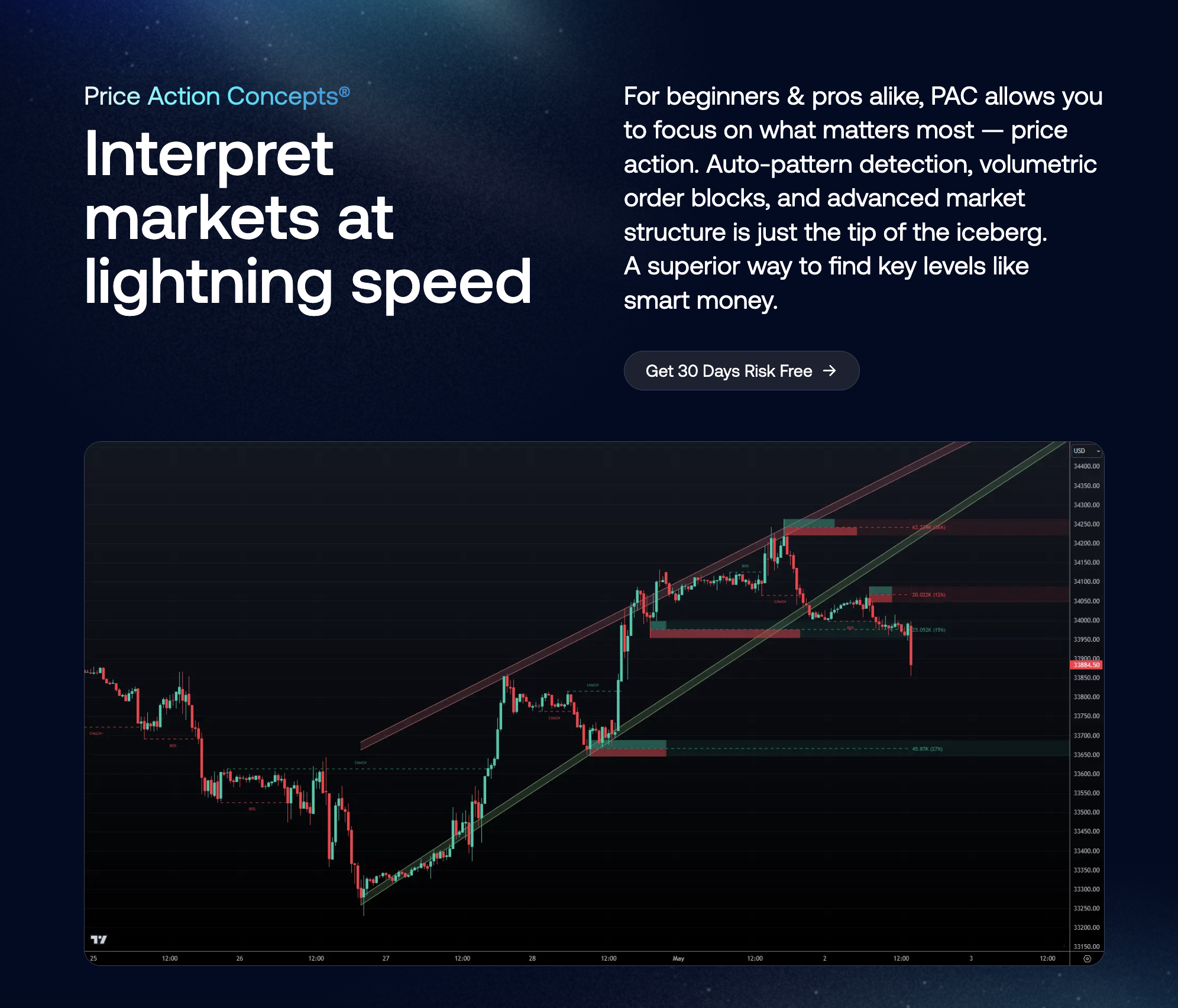
Conclusion
Key Takeaways
Chart pattern analysis is central to technical trading, linking price movements with trader psychology to provide actionable insights. This guide emphasizes combining chart patterns with complementary strategies for improved trading outcomes.
To succeed, focus on:
- Developing a deep understanding of chart patterns and market psychology
- Using technical indicators to confirm pattern signals
- Implementing risk management strategies based on pattern structures
- Regularly reviewing and refining your trading approach
How to Apply Chart Pattern Analysis
Here’s how to integrate chart pattern analysis into your trading routine:
- Practice identifying patterns using historical charts.
- Use indicators like RSI or MACD to confirm your analysis.
- Set strict stop-loss levels based on the specific pattern.
- Review your trades weekly to pinpoint areas for improvement.
For optimal results, combine chart patterns with:
- A solid grasp of market psychology
- Multi-timeframe analysis for signal validation
- Volume analysis to confirm breakout strength
- Risk parameters tailored to each pattern
- Continuous strategy adjustments based on trade reviews
FAQs
How to trade on a double top?
A double top is a trend reversal pattern indicating weakening bullish momentum when buyers fail to surpass previous highs. To trade it effectively, follow these steps:
- Entry: Wait for the price to break below the neckline with strong volume to confirm the pattern and avoid false signals [8].
- Stop Loss: Place your stop loss just above the second peak, serving as a safeguard to limit potential losses [2].
- Profit Target: Use the measured move method by projecting the pattern's height from the breakout point.
This approach ties into the risk management strategies discussed earlier. For enhanced results, combine it with indicator-based strategies from the advanced techniques section while maintaining disciplined risk management.


